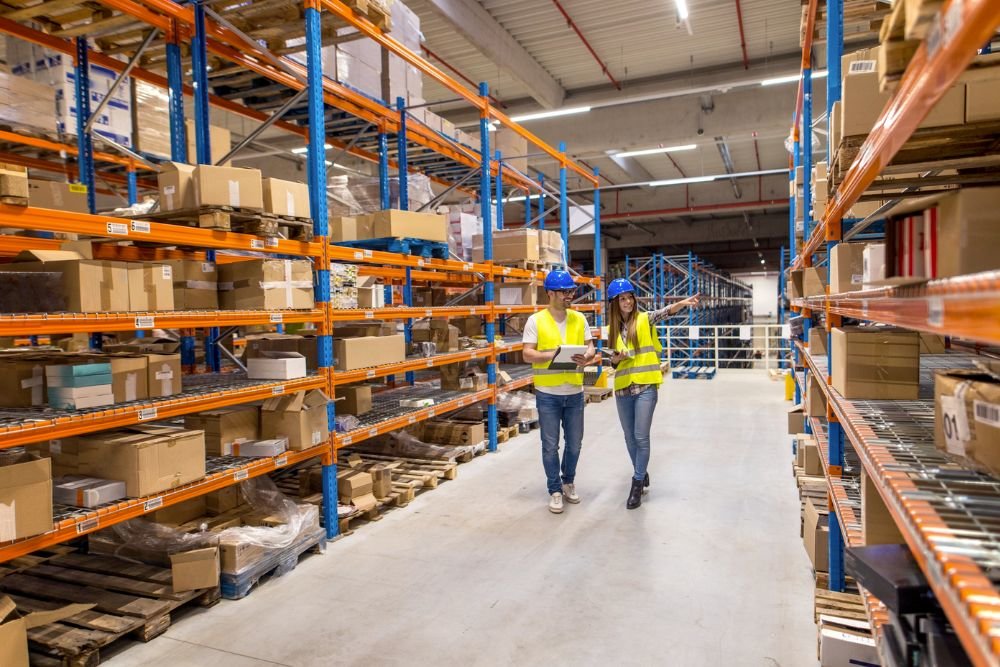Why Global E-Commerce Businesses Should Open EU Warehouses
BlogGennaio 11, 2023

Expanding your e-commerce business presents a vital opportunity to turn a U.S. business into an international operation. E-commerce growth in the U.S. has shattered all expectations, and the European Union (EU) has experienced similar exponential growth.
Approximately 74% of EU internet users shopped online in 2021, demonstrating the massive demand for e-commerce within the European market. However, shipping from the U.S. means long wait times, and modern consumers are unwilling to wait. Fortunately, setting up an e-commerce warehouse in the EU is an opportunity to grow and fuel your global e-commerce operations.
Most customers purchase not only when they pay, but also when they receive their parcel. Within the world of e-commerce, the courier or postal agent is often the only physical interaction someone has with your brand. Customers are more unforgiving than ever, with 25% of shoppers admitting they've canceled a purchase because of slow delivery times.
With so much competition within e-commerce, a failure to communicate, provide a high-quality delivery service, deliver on time, and provide robust packaging will lead to a massive drop in business. There can be no compromise on these moving parts, as they all work together to contribute to a memorable customer experience.
Beyond losing business, operational inefficiencies within your supply chain and e-commerce warehouse will lead to higher customer care costs.
Approximately 74% of EU internet users shopped online in 2021, demonstrating the massive demand for e-commerce within the European market. However, shipping from the U.S. means long wait times, and modern consumers are unwilling to wait. Fortunately, setting up an e-commerce warehouse in the EU is an opportunity to grow and fuel your global e-commerce operations.
The Definition of Operational Efficiency
Operational efficiency is pivotal to a successful overseas warehouse. The truth is that a customer makes a purchase twice from your business. What do we mean by this?Most customers purchase not only when they pay, but also when they receive their parcel. Within the world of e-commerce, the courier or postal agent is often the only physical interaction someone has with your brand. Customers are more unforgiving than ever, with 25% of shoppers admitting they've canceled a purchase because of slow delivery times.
With so much competition within e-commerce, a failure to communicate, provide a high-quality delivery service, deliver on time, and provide robust packaging will lead to a massive drop in business. There can be no compromise on these moving parts, as they all work together to contribute to a memorable customer experience.
Beyond losing business, operational inefficiencies within your supply chain and e-commerce warehouse will lead to higher customer care costs.

The Definition of Logistics in E-Commerce
Logistics within e-commerce is a huge market worth an estimated $269.34 billion in 2021, with a considerable growth rate expected in the years ahead. E-commerce logistics, often referred to as e-logistics, includes the process of your brand getting an order into the hands of the customer.
Your logistics must cover packing, shipping, delivery, and returns. Operating a decentralized warehouse overseas for a U.S. business requires investing in creating an in-house operation or outsourcing to an order fulfillment company. Each option has its pros and cons within logistics network optimization.
Thankfully, the EU is well-versed in e-commerce. The growth and demand for online retail have meant skilled providers have flooded the market, offering just as many solutions as the domestic U.S. market.
Some organizations might even partner with multinational order fulfillment companies within the e-commerce sector to cover multiple regions of the global community using the same reliable partner.
The concept of warehousing is nothing new. Warehouses have existed for centuries, and even within the e-commerce sector, the warehouse’s function has changed little, even if the technology used to operate warehouses has evolved.
Maximizing your warehousing within the European market offers a chance to be closer to where your customers are, better manage your inventory, and keep track of your stock levels. But warehousing — and its connection to operational efficiency — relies on covering the entire product life cycle.
Much of the emphasis on warehousing and its impact focuses on deliveries and stock management. However, there’s a massive battle when it comes to returns. Your e-commerce warehouse solution must cover reverse e-logistics; otherwise, the whole system could collapse and lead to a poorer customer outcome.
Yet the drive toward “customer first” comes at a cost. Figures from the National Retail Federation reveal the estimated cost of returns of holiday purchases hovers around $101 billion for American retailers. The answer is not to try to tighten up on customers but to take it in stride instead.
Creating an efficient warehouse and optimizing your logistics network within Europe will enable you to comply with your responsibilities and ensure a five-star customer experience.
European consumers have high expectations when it comes to online shopping. As such, warehousing placement and efficient processes are crucial to meet their wants and needs. This means you must provide a high-quality customer experience in Europe for a mature audience of shoppers expecting the best in service. Fortunately, this is made possible by offering streamlined buyer journeys and opening decentralized warehouses.
Thankfully, the EU is well-versed in e-commerce. The growth and demand for online retail have meant skilled providers have flooded the market, offering just as many solutions as the domestic U.S. market.
Some organizations might even partner with multinational order fulfillment companies within the e-commerce sector to cover multiple regions of the global community using the same reliable partner.
The Issue of Warehousing and Its Connection to Operational Efficiency
The concept of warehousing is nothing new. Warehouses have existed for centuries, and even within the e-commerce sector, the warehouse’s function has changed little, even if the technology used to operate warehouses has evolved.
Maximizing your warehousing within the European market offers a chance to be closer to where your customers are, better manage your inventory, and keep track of your stock levels. But warehousing — and its connection to operational efficiency — relies on covering the entire product life cycle.
Much of the emphasis on warehousing and its impact focuses on deliveries and stock management. However, there’s a massive battle when it comes to returns. Your e-commerce warehouse solution must cover reverse e-logistics; otherwise, the whole system could collapse and lead to a poorer customer outcome.
Yet the drive toward “customer first” comes at a cost. Figures from the National Retail Federation reveal the estimated cost of returns of holiday purchases hovers around $101 billion for American retailers. The answer is not to try to tighten up on customers but to take it in stride instead.
Creating an efficient warehouse and optimizing your logistics network within Europe will enable you to comply with your responsibilities and ensure a five-star customer experience.
European consumers have high expectations when it comes to online shopping. As such, warehousing placement and efficient processes are crucial to meet their wants and needs. This means you must provide a high-quality customer experience in Europe for a mature audience of shoppers expecting the best in service. Fortunately, this is made possible by offering streamlined buyer journeys and opening decentralized warehouses.

Why Would Companies Want to Open Warehouses in the EU?
Opening warehouses within the EU gives you access to the world’s largest trading block. The EU is the leading trading partner of 80 countries. Paying attention to this market and influencing its e-commerce sector is a huge opportunity to expand your operations.But why should you decide to open a warehouse within the EU itself?
- Avoid paying double duties by importing and exporting directly to the EU.
- Alleviate the administrative duties involved in working outside the EU.
- Be closer to where your customers are to ensure faster deliveries.
- Reduce your shipping costs for European customers.
- Benefit from any 27 national tax regimes from countries making up the EU.
Intelligent warehousing is part of global logistics optimization and is vital for fulfilling customer expectations within the next generation of e-commerce. Choose your partner wisely and reap the benefits of this valuable overseas market today.
With e-commerce doubling in size in the past five years, e-commerce logistics cannot be glossed over or viewed as an add-on if your business is focused on growth. Contact our experts at Go Global Ecommerce today to learn more about the issue of warehousing in the EU and how it can potentially boost your e-commerce operations.

